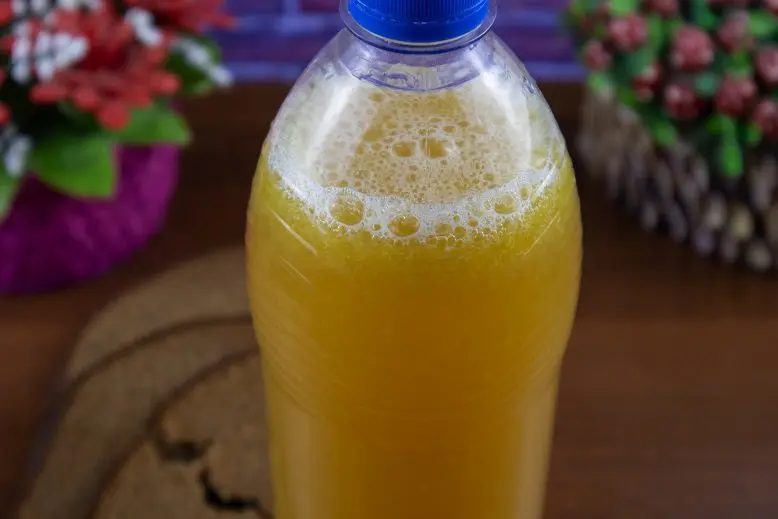Yeast-free kvass has one significant advantage – the absence of a specific smell, which is given by bakery dry or pressed yeast. At the same time, the technology for obtaining a drink is not much complicated. We will look at how to make kvass without yeast from bread at home, having analyzed all the nuances in detail. Subsequently, the finished starter can be used several times in new batches, which further simplifies the preparation process.
The classic recipe uses rye or rye-wheat bread. Fans of kvass with a light cumin aroma and aftertaste can take Borodino, but you need to fry it only lightly or do without roasting at all.
The success of cooking by 80% depends on the quality of bread, the more chemicals in the composition, the higher the risk that kvass will not ferment or turn out to be tasteless. Bread should be fragrant, and stale after 1-2 days. The remaining 20% is the choice of water, only well-purified, spring or bottled water is suitable.
The fermentation container and bottles must be thoroughly rinsed (preferably treated with boiling water) to kill pathogenic microorganisms. I do not advise you to put kvass without yeast in containers in which dairy products were previously stored.
Ingredients:
- black bread (rye) – 300 grams (about half a standard loaf);
- water – 2 liters;
- sugar – 100-150 grams;
- unwashed raisins – 25 grams.
Sugar is needed not only for sweetness, but also for carbonization – saturation of homemade kvass with carbon dioxide. Raisins are used as a source of natural wild yeast, so the berries are not washed to ensure that the right microorganisms remain on the surface.
Recipe for homemade kvass without yeast
1. Cut the bread with the crust into 3-4 cm cubes.
2. Put the cubes in one layer on a dry (without oil) baking sheet. Put the bread in an oven preheated to 160-180°C for 2-4 minutes until a characteristic aroma and a yellowish crust appear on the pulp. It is not worth overcooking, otherwise the kvass will be very bitter.
3. Fold the finished crackers into a saucepan, pour boiling water over it. Add 50-75 grams of sugar, mix.
4. Cool kvass wort to room temperature, add raisins. Pour into a jar or other container for fermentation. Cover the neck with gauze or cloth to protect against flies and other insects. Do not close the lid!
5. Transfer kvass to a dark place at room temperature. After 8-24 hours, signs of fermentation will appear: a slight sour smell, hiss and foam on the surface.
6. After 2-3 days from the start of fermentation, filter through 3-4 layers of gauze. Squeeze the pulp lightly or just let it drain.
The remaining pomace is a ready-made sourdough for kvass without yeast for the next batches. It is enough to add a handful of pomace to the new wort (the proportions do not change) or pour the pomace with cold sugar syrup with a slice of fresh bread for flavor. The procedure can be repeated up to 4 times. The most delicious is kvass of the second and third batches. You can store yeast-free sourdough in the refrigerator, but not longer than 24 hours.
7. Try a drink. Add sugar to taste, if desired, mix. Kvass must be at least slightly sweet, otherwise it will not work to make it carbonated.
8. Pour kvass into storage containers: plastic or glass bottles, jars. Leave 3-5 cm of free space. Close hermetically. Put for 4-8 hours in a dark place at room temperature.

It is better to use plastic containers, the pressure of carbon dioxide in which is easy to control. If the bottle has become hard, you can proceed to the next step.
Attention! At least once an hour, check the pressure in the bottles, if necessary, slightly bleed the gas by opening the cork.
9. Transfer carbonized (saturated with carbon dioxide) bread kvass to a refrigerator or cellar with a temperature of 3-10°C. In a cold environment, fermentation will stop and the taste will stabilize.
10. After 4 hours, the drink is ready. Store yeast-free kvass in the refrigerator or cellar for no longer than 5 days.










